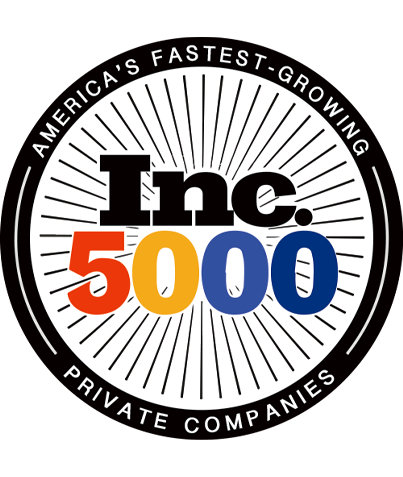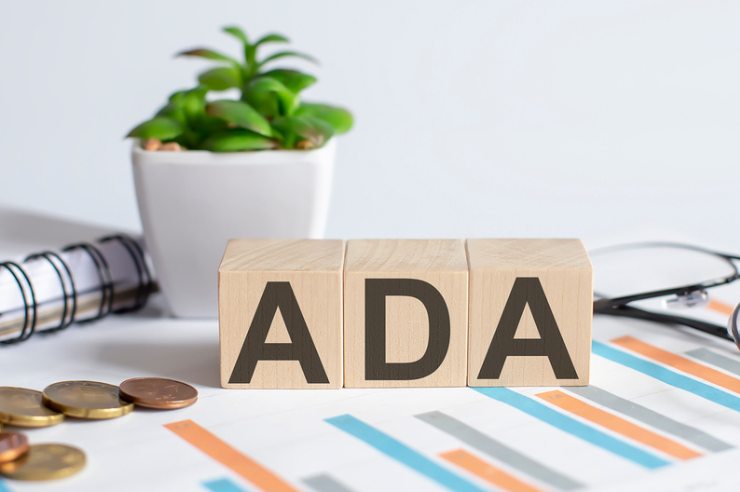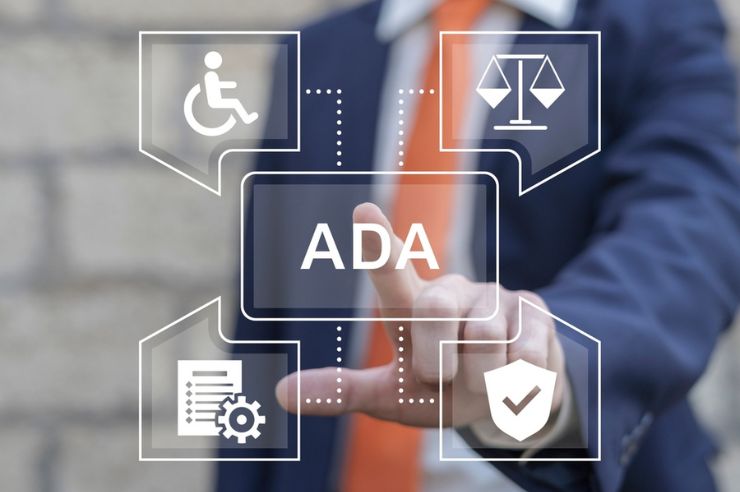Achieving ADA compliance for your website isn’t just about meeting legal requirements—it’s about creating an accessible, inclusive experience for all users. An ADA compliance checker can help website owners identify and resolve accessibility issues to adhere to the Americans with Disabilities Act (ADA) and Web Content Accessibility Guidelines (WCAG). With so many tools available, choosing the right one for your needs can be daunting. This guide compares the 6 best ADA compliance scanning tools, outlining their features, pricing, ease of use, and ideal use cases.
What is ADA Compliance?
ADA compliance ensures websites are accessible to individuals with disabilities, including those who rely on screen readers, have visual impairments, or face mobility challenges. By addressing these accessibility needs, website owners can avoid legal risks like lawsuits and fines while fostering inclusivity and improving user experience for all visitors.
Compliance with the Americans with Disabilities Act is guided by the Web Content Accessibility Guidelines (WCAG), which outline three ADA compliance levels:
- Level A: The minimum level of accessibility, addressing the most basic web elements to ensure content is perceivable and usable.
- Level AA: The mid-tier level, commonly required for legal compliance, focuses on optimizing the overall user experience and addressing common barriers.
- Level AAA: The highest level recommended for sites aiming to provide an exceptional accessibility experience, though not always required.
6 ADA Compliance Checkers: Top Picks and Comparisons

Choosing the right ADA compliance checker is essential for ensuring your website meets accessibility standards. With so many tools available, finding one that fits your specific needs can feel overwhelming. Below, we’ve highlighted seven of the best website ADA compliance checkers, comparing their features, pricing, and ideal use cases to help you make an informed decision. Whether you’re a small business owner or enterprise leader, there’s a tool designed to simplify accessibility compliance and improve user experiences.
- Accessibility Checker
Accessibility Checker is a flexible tool offering free and paid options, making it ideal for small businesses or individual website owners seeking a cost-effective solution. The tool provides detailed reports highlighting compliance issues, such as missing alt text, broken links, or WCAG 2.1 violations. This free ADA website compliance checker simplifies accessibility by breaking down errors into actionable steps, ensuring even beginners can improve their site’s compliance. Its straightforward interface and accessible pricing make it a reliable starting point for anyone new to ADA compliance.
- AccessiBe
AccessiBe stands out for its AI-driven automation, delivering real-time fixes for accessibility issues while continuously monitoring your website for new violations. Designed for enterprises, this ADA compliance website checker provides compliance certifications and integrates seamlessly into large-scale operations. The platform offers an intermediate-level user experience, catering to organizations that need hands-off solutions to meet ADA standards without requiring extensive technical expertise. With AccessiBe, businesses can focus on scaling while maintaining an inclusive digital presence.
- WAVE Accessibility
WAVE Accessibility is a free browser extension perfect for individuals seeking instant accessibility feedback. This ADA compliance color checker specializes in identifying critical issues, including color contrast errors and improper structural hierarchies. Its visual feedback system highlights problem areas directly on your website, making it easy to spot and fix violations. Whether you’re addressing WCAG guidelines or testing for usability, WAVE provides a beginner-friendly approach to tackling ADA compliance website color checker issues.
- UserWay Scanner
UserWay Scanner offers free and paid features tailored to small businesses. The tool includes checks for image compliance, an area often overlooked in accessibility efforts, and provides a customizable widget to improve user interaction. This free ADA compliance checker is simple to set up, allowing business owners to enhance their site’s accessibility without technical expertise. UserWay’s added functionalities, such as image alt text scanning, make it a versatile tool for improving overall compliance and usability.
- axe Accessibility Checker
axe Accessibility Checker is a comprehensive tool designed to help website owners identify and address accessibility issues on their sites. Offering a free version, it focuses on WCAG-specific requirements essential for ADA compliance. While the tool provides detailed technical audits, it’s valuable for website owners looking to ensure their site meets the highest accessibility standards. axe helps spot issues such as missing alt text, improper color contrast, and other barriers that could affect users with disabilities. With its actionable insights, axe makes creating a more inclusive and user-friendly website easier, reducing legal risks and improving the overall site experience.
- Siteimprove Accessibility
Siteimprove Accessibility caters to large organizations and enterprises requiring robust reporting and monitoring. With actionable insights and detailed analytics, this tool helps businesses maintain compliance on an ongoing basis. Designed for intermediate users, it offers features like automated testing, dashboard-based tracking, and collaborative workflows. This ADA compliance contract checker is an essential resource for teams managing extensive websites that require continuous accessibility improvements.
Finding the Right ADA Scanning Tool for Your Website
Each of these ADA accessibility tools offers unique strengths, from beginner-friendly interfaces to enterprise-level scalability. Choosing the best fit depends on your website’s size, audience, and technical requirements. Integrating the right ADA compliance tool ensures your site is accessible, inclusive, and aligned with legal standards.
Comparison Chart: Key Features of ADA Compliance Website Checkers
| Tool | Pricing | Features | Best For | Ease of Use |
| Accessibility Checker | Free/Paid | Provides detailed reports, checks for alt text issues, and includes WCAG 2.1 compliance guidelines. | Small businesses or individual site owners looking for an affordable solution. | Beginner-friendly |
| AccessiBe | Paid | Uses AI for automated fixes, ongoing monitoring, and compliance certifications. | Enterprises needing scalable solutions. | Intermediate |
| WAVE Accessibility | Free | Browser extension for instant checks, focusing on color contrast and structural issues. | Businesses seeking quick assessments. | Beginner-friendly |
| UserWay Scanner | Free/Paid | Includes image compliance checks and a customizable accessibility widget for user interaction. | Small to medium-sized businesses. | Easy setup |
| axe Accessibility | Free | Comprehensive WCAG compliance testing with a user-friendly interface for identifying and fixing issues. | Businesses addressing key accessibility areas. | Intermediate |
| Siteimprove Accessibility | Paid | Enterprise-level reporting, analytics, and continuous monitoring with actionable insights. | Large organizations needing robust tracking. | Intermediate |
How to Choose the Best ADA Compliance Checker
Selecting the right ADA compliance checker is essential for maintaining an accessible and inclusive website, but the ideal choice depends on the specific needs of your business. Here’s a breakdown of recommendations tailored for businesses:
Small Businesses
Small businesses often need cost-effective, easy-to-use tools to improve accessibility without requiring a dedicated technical team. Accessibility Checker and UserWay Scanner are great choices for small businesses:
- Accessibility Checker: This tool provides both free and affordable paid plans that deliver actionable insights. Its beginner-friendly interface ensures business owners can identify and address accessibility issues such as missing alt text or poor color contrast without requiring technical expertise.
- UserWay Scanner: With features like a customizable accessibility widget and image compliance checks, UserWay is ideal for businesses looking to enhance user interaction quickly. Its free ADA compliance checker functionality makes it a great choice for budget-conscious businesses that want reliable results without breaking the bank.
These tools allow small businesses to make their websites more accessible without requiring a large budget or technical staff.
For Enterprises
Large organizations often require robust reporting, ongoing monitoring, and scalable solutions to manage ADA compliance across complex websites. AccessiBe and Siteimprove Accessibility excel in these areas:
- AccessiBe: AccessiBe uses AI-driven automation to implement accessibility fixes in real time and continuously monitor the website for violations. It’s perfect for enterprises that need hands-off management and ongoing compliance certifications.
- Siteimprove Accessibility: Siteimprove offers enterprise-level features like detailed analytics, automated testing, and collaborative workflows. It helps businesses stay proactive by tracking compliance metrics over time and ensuring ongoing accessibility.
These tools are well-suited for enterprises requiring continuous monitoring and managing large-scale websites with minimal manual intervention.
General Recommendations for Business Owners
- Identify Your Priorities: To help guide your decision, determine whether your focus is on affordability, ease of use, or comprehensive monitoring.
- Test Before You Commit: Many tools, such as Accessibility Checker and UserWay Scanner, offer free versions or trials. Use these to evaluate how well they meet your business needs before committing to a paid plan.
- Focus on Actionable Insights: Choose tools that identify issues and provide clear guidance on how to fix them.
Choosing the right ADA compliance scanning tool based on your business size and goals ensures that your website meets accessibility standards and provides an inclusive user experience.
Top Questions About ADA Compliance Website Checkers
Here are some of the most frequently asked questions about ADA compliance tools, along with answers to help you understand how these tools can help make your website accessible.
1. How do I check for ADA compliance?
To check your website for ADA compliance, you can use an ADA compliance checker, which scans your site for potential accessibility issues. Tools like WAVE Accessibility and axe Accessibility Checker offer comprehensive scanning capabilities that identify issues such as poor color contrast, missing alt text, and improper HTML structure. These tools provide detailed reports and actionable recommendations to improve accessibility and ensure compliance with ADA guidelines.
2. What’s the best free ADA compliance checker?
If you’re looking for a free ADA compliance checker, WAVE Accessibility and axe Accessibility Checker are two of the best options. Both tools are reliable for conducting accessibility audits and particularly helpful for small businesses or website owners on a budget. WAVE provides a browser extension that allows you to check for accessibility issues instantly. At the same time, axe offers in-depth WCAG 2.1 compliance checks that are valuable for ensuring that your website meets all necessary standards.
3. How do I check if my website’s images are compliant?
Images, particularly alt text, are critical to ADA compliance. Alt text ensures that visually impaired users can understand the content of images using screen readers. UserWay Scanner and Accessibility Checker include ADA compliance image checker features, automatically scanning your site for missing or improperly formatted alt text. These tools provide feedback and allow you to easily update your images to ensure they are accessible, helping you meet ADA requirements and enhance user experience.
4. Can ADA compliance checkers help with color contrast issues?
Yes, ADA compliance checkers can help identify color contrast issues, which are crucial for ensuring that text is readable by users with visual impairments. Tools like WAVE Accessibility and UserWay Scanner, including their ADA color compliance checker features, are particularly effective at checking for color contrast violations. These tools highlight areas where text and background colors do not meet the recommended contrast ratios, allowing you to make necessary adjustments to improve readability and ensure compliance with ADA standards.
5. How often should I run ADA compliance checks on my website?
Regular ADA compliance checks are important to ensure your website remains accessible, especially after any updates or changes to the content or design. It’s recommended to run checks at least once a month or after making significant updates to your website. Using tools like Siteimprove Accessibility or AccessiBe, which offer continuous monitoring, can help you stay on top of any accessibility issues as your website evolves.
6. Are ADA compliance checkers accurate?
While ADA compliance checkers are very useful, they may not catch every single issue, especially more complex accessibility problems that require human judgment. Tools like WAVE Accessibility and axe Accessibility Checker are highly accurate for detecting many common accessibility barriers. Still, it’s important to perform manual testing and, if necessary, work with a specialist to ensure complete compliance.
7. Do ADA compliance checkers help with legal compliance?
ADA compliance checkers help identify and resolve accessibility issues that could potentially lead to legal risks, such as lawsuits or fines for non-compliance. While tools like WAVE Accessibility and AccessiBe can help you meet the guidelines outlined in the WCAG (Web Content Accessibility Guidelines), it’s crucial to understand that full legal compliance also requires ongoing monitoring, policy updates, and legal consultation to ensure your website adheres to current standards and regulations.
8. What is the difference between a free ADA compliance checker and a paid one?
Free ADA compliance checker websites, such as WAVE Accessibility and axe Accessibility Checker, provide a basic level of testing and are ideal for small businesses or individuals on a budget. However, paid tools like AccessiBe and Siteimprove Accessibility offer more advanced features, including automated fixes, ongoing monitoring, and detailed reports tailored to larger organizations. Paid tools are often more suited to enterprises that need robust compliance tracking and continuous support.
9. Can ADA compliance checkers help with PDF accessibility?
Some ADA compliance checkers, such as Siteimprove Accessibility, offer limited functionality for scanning and checking PDFs. However, PDF accessibility often requires specialized tools or manual checks, especially for complex documents. If your website includes PDFs, you may need to use specific PDF accessibility tools or consult a specialist to ensure compliance.
These FAQs cover some of the most common concerns of business owners when considering ADA compliance tools. In the next section, we’ll dive deeper into the key compliance issues, such as color contrast and alt text, and how you can address them on your website.
Understanding Key ADA Compliance Issues

When addressing ADA compliance, it’s essential to focus on key accessibility elements such as color contrast, alt text, and keyboard navigation. Properly implementing these components can significantly improve your website’s accessibility, making it more inclusive for users with disabilities.
Color Contrast
Color contrast is a crucial element of accessibility. Poor contrast between text and background colors can make it difficult for users with visual impairments, including color blindness, to read content. ADA compliance guidelines recommend a minimum contrast ratio to ensure text readability. Tools like WAVE Accessibility can help identify color contrast issues on your site, allowing you to make adjustments that enhance accessibility using this color contrast checker.
Alt Text
Alt text (alternative text) describes images for users who rely on screen readers. Without proper alt text, visually impaired users may not understand the content or purpose of an image. ADA regulations require that all images have descriptive alt text that accurately conveys the meaning of the image. UserWay Scanner and Accessibility Checker can help identify missing or incorrect alt text on your website.
Keyboard Navigation
Keyboard navigation is another essential component of ADA compliance, ensuring that users who cannot use a mouse can still navigate your website effectively. Websites should be designed so that all interactive elements are accessible via keyboard shortcuts. WAVE Accessibility and axe Accessibility Checker can detect keyboard navigation issues, making addressing problems like missing focus indicators or non-functioning keyboard controls easier.
Fixing these critical issues can improve your website’s accessibility and create a better user experience for all visitors. In the next section, we will discuss how to choose the best ADA compliance tools to help you implement these fixes effectively.
Risks of ADA Non-Compliance and Legal Implications
Failing to address ADA compliance on your website can result in serious legal consequences, including costly lawsuits and reputational damage. As more individuals with disabilities demand accessible websites, businesses that neglect these requirements may face legal action. By proactively addressing accessibility issues, you avoid potential penalties and create a more inclusive user experience, enhancing customer satisfaction and loyalty.
Legal Consequences
Lawsuits regarding ADA compliance have become more prevalent in recent years. Businesses that fail to make their websites accessible to people with disabilities risk being sued for non-compliance. These lawsuits can be costly in terms of financial penalties and legal fees. To avoid these risks, it’s essential to regularly check your website for compliance and take immediate steps to fix any identified issues.
Reputation Damage
Beyond the legal ramifications, non-compliance can severely damage your brand’s reputation. Customers encountering accessibility issues may view your company as insensitive or unprofessional, leading to negative publicity. Accessible websites, on the other hand, can build goodwill, foster customer loyalty, and even attract new business.
By addressing these compliance issues upfront and using tools to identify and resolve them, businesses can ensure their websites are accessible, legally compliant, and user-friendly for all visitors. This proactive approach reduces the risk of lawsuits and helps businesses meet their social responsibility goals.
How Oyova Can Help with ADA Compliance
Navigating ADA compliance can be complex, especially for businesses that may not have the technical expertise or resources to address accessibility challenges. At Oyova, we provide expert, tailored solutions to ensure your website meets all accessibility standards, helping you avoid legal risks and create a more inclusive experience for your users.
Our comprehensive ADA compliance services include:
Comprehensive Audits
Our team conducts thorough accessibility audits to assess your website’s compliance with ADA standards, including WCAG guidelines. We identify any areas that need improvement, from alt text to color contrast and keyboard navigation, ensuring that every element of your website is accessible.
Detailed Remediation Plans
Once the audit is complete, we provide a clear, actionable remediation plan outlining the necessary steps to fix any accessibility issues. This plan is designed to be practical and efficient, ensuring that changes are implemented smoothly and effectively without disrupting your website’s functionality or user experience.
Ongoing Monitoring and Maintenance
ADA compliance is not a one-time effort. We offer ongoing monitoring and maintenance services to ensure your website remains compliant. We track changes to accessibility laws and standards and update your website accordingly to keep it accessible and compliant over time.
Taking proactive steps toward ADA compliance is more than just avoiding legal consequences—it’s about improving your website’s usability and providing an equitable experience for all users. With Oyova’s ADA website compliance services, we make it easy for you to meet these standards and stay ahead of the curve.
Resolve ADA Website Issues Now
Choosing the right ADA compliance checker is essential for maintaining an accessible and legally compliant website. Whether you’re a small business or a large enterprise, there’s a tool suited to your needs. For professional ADA compliance services, audits, and remediation, trust Oyova to guide you every step of the way.
Ready to make your website fully accessible? Contact Oyova today for a free consultation and learn how our tailored solutions can help you achieve full ADA compliance. Together, we can ensure your website is inclusive, legally compliant, and user-friendly for all visitors.
Disclaimer
The information provided in this blog is for general informational purposes only and is not intended as legal advice. The contents of this blog may not reflect the most current legal standards or interpretations. Please consult with a qualified attorney for specific legal advice regarding ADA compliance or other legal issues. Oyova does not guarantee the accuracy, completeness, or usefulness of any information on this site and is not responsible for any errors or omissions or the results obtained from the use of this information.
Our Awards












